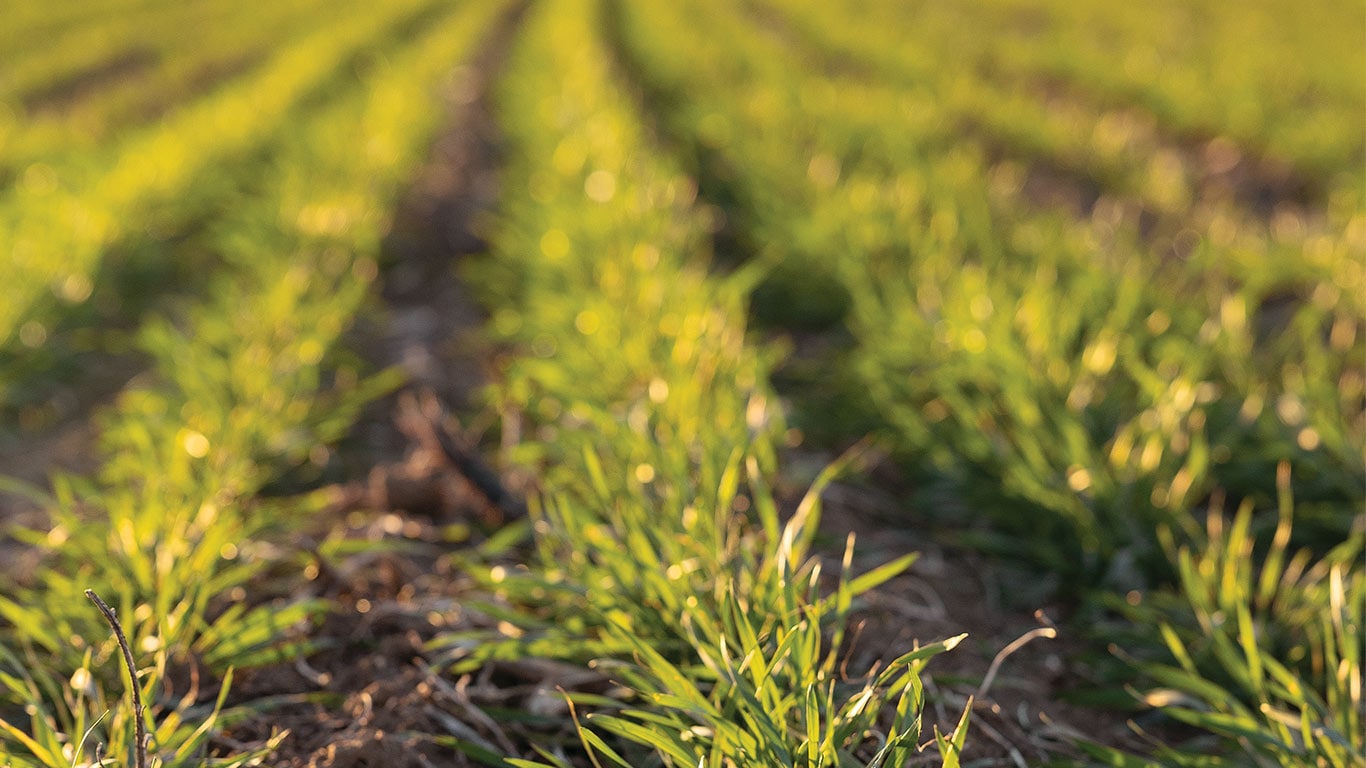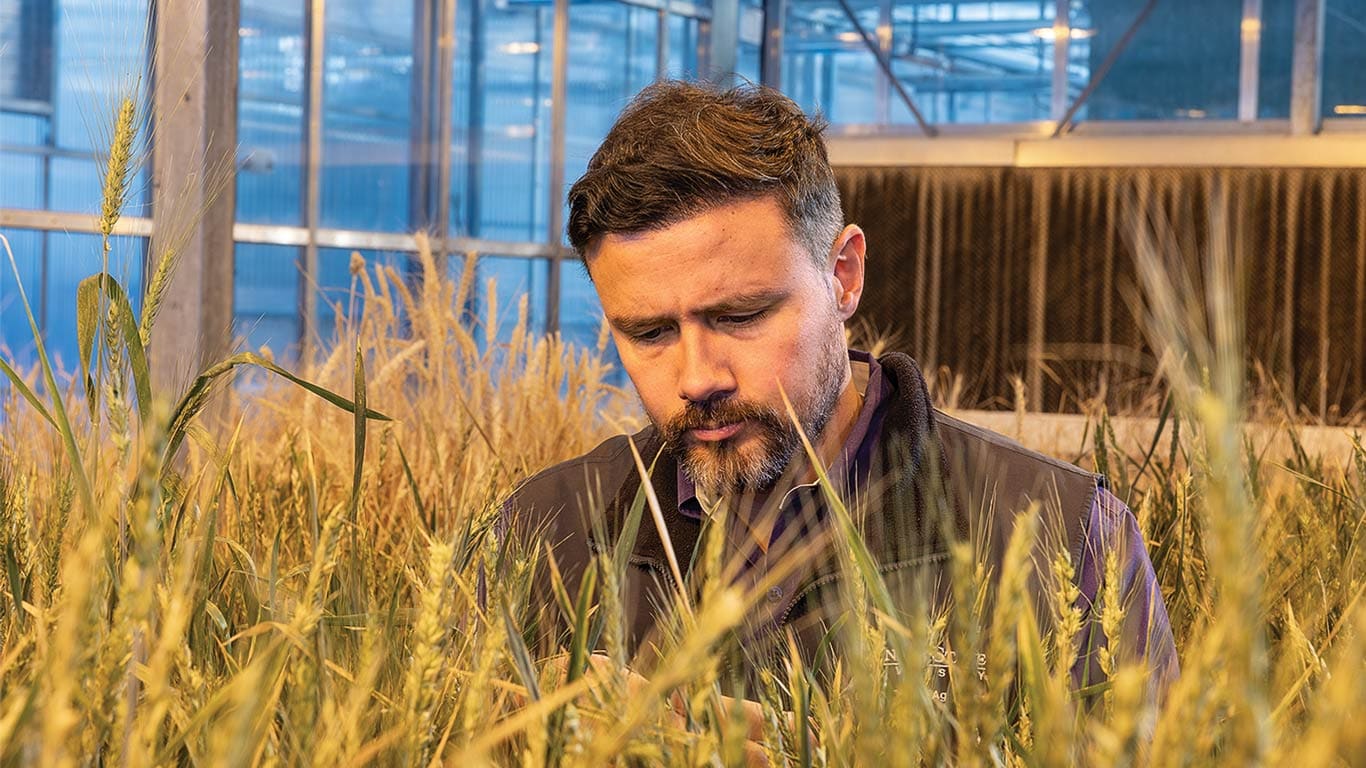Agriculture, Education September 01, 2025
In Search of Maximum Wheat
Prioritize yield by focusing on the basics.
by Bill Spiegel
On average, Kansas wheat farmers produce about 48 bushels per acre. In Oklahoma, the average yield is 39 bushels; Texas, 32 bushels per acre.
Variability is the name of the game, given the unpredictability of weather over a long growing season. But Romulo Lollato, wheat and forage specialist at Kansas State University, believes wheat farmers are leaving a lot of yield in the field due to management.
"Under optimum dryland conditions in Kansas, we believe you can get 75 bushels per acre. That's a 36% difference," says Lollato, who has studied the "yield gap" in wheat for several years. For the last decade, he has compared wheat yield strategies from farmers content with average yields, to those aiming for higher yields in Oklahoma and Kansas.
The standard practice of most farmers, he says, amounts to a yield goal of 60 bushels per acre, with practices including about 120 pounds of urea (dry) or UAN (liquid) nitrogen each spring, when the crop reaches Feekes Growth Stage 3, or when tillers are formed. Farmers may apply a dose of fungicide if weather conditions later in the season warrant.
For maximum yield, growers tend to use the same practices as above, but add another 40 pounds of nitrogen at Feekes 5 (jointing stage), plus two fungicide applications: one at jointing (Feekes 5) and again at flag leaf or heading (Feekes 9).
The right seed. Scrutinize wheat variety characteristics to find the traits that fit your management styles, Lollato urges. It's difficult to predict outbreaks of treatable foliar diseases like leaf, stripe and stem rust, powdery mildew, tan spot, and blotches, but growers reluctant to apply fungicides during the growing season need to find varieties with strong disease resistance packages.
"If you're not willing to put out the management to beat those diseases, you need a resistant variety," he says.
When using fungicides, consider the two-application protocol. The first fungicide application will take care of diseases that overwinter locally, such as tan spot, powdery mildew, and leaf blotch. The second application will protect new leaf development, and protect against rust strains that tend to blow in from the south as the flag leaf emerges.
Above. Romulo Lollato, Extension wheat specialist at KSU, says tweaking fertility and fungicide practices can boost wheat yields each year.
Fertilize accordingly. Applying too much nitrogen fertilizer adds extra expense and is subject to leaching in wet weather, if fertilizer is not treated with a nitrogen stabilizer. Timing multiple applications when the crop most needs the nutrient may be money well spent, says Dorivar Ruiz-Diaz, soil fertility specialist at Kansas State.
Twenty to thirty pounds of nitrogen applied before or at planting is enough to support fall growth. A second application of 20 to 30 pounds more nitrogen in late winter or early spring can boost spring tillering, and farmers have the flexibility to add herbicides at that time, too.
"This late-winter/early-spring application becomes especially important when stands are thin due to poor emergence," Ruiz-Diaz says.
The last application can be made at jointing, or a few days later. This supports heading and grain fill, he adds.
No sure thing. Wheat producers who adopt all of the high-yield strategies in Lollato's research aren't guaranteed a yield bump. Winter wheat, after all, is subject to nine months of extreme weather conditions.
"Sometimes we lose yield due to extra management. If it's a dry season, we don't need that extra biomass and having more green leaf surface area hurts rather than helps," he says.
But over 3,000 observations over the years, adopting the high management protocols deliver a 34% mean yield increase over standard management, he says. "There's quite a bit of yield gain to be had." ‡
Read More

AGRICULTURE, SPECIALTY/NICHE
Last One Standing
Pushing through the pain to claim the Extreme Chili Alliance Belt Match.



